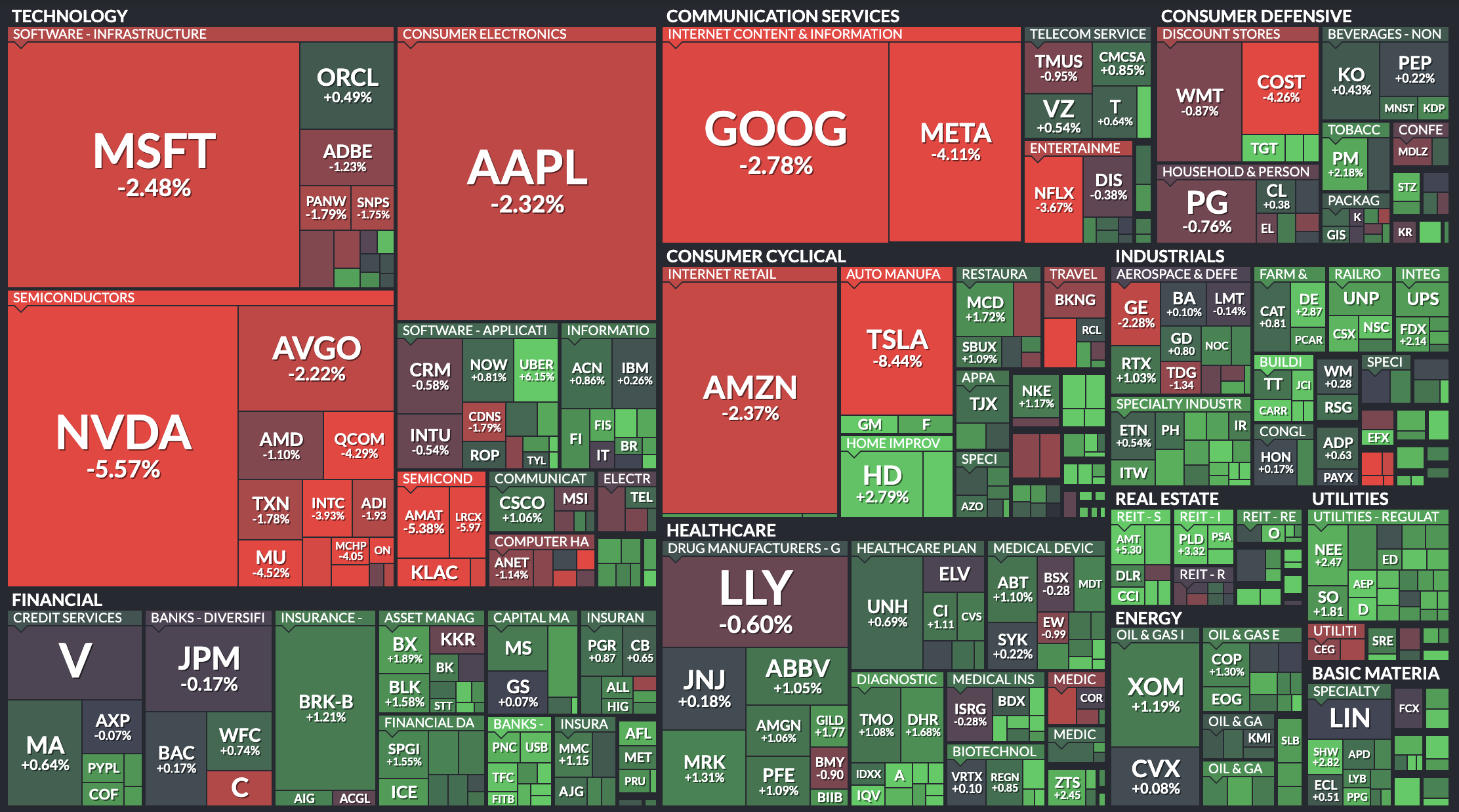If the Magnificent 7 can lift the S&P 500, it can sink it too. That’s exactly what happened yesterday.
The Mag 7 was down 4.42% as a group, dragging the S&P 500 down by 0.86%. At the same time, the small-cap Russell 2000 was up 3.59%! There were 4,894 gainers and just 1,187 losers. So, the broad market rallied while the index was down.

Looking within the S&P 500 components heat map, we can see more greens than reds, but because the heavily weighted stocks were in the reds, they dragged the index down. The largest Mag 7 declines included Tesla (-8.44%), Nvidia (-5.57%), and Meta (-4.11%).

The skewed weightage of the S&P 500 shows that it is currently less reliable as a barometer of market strength.
Examining the small caps’ biggest gainers, we see ridiculous one-day gains of over 20%. Many of these are riskier stocks in the biotech industry. But why the sudden change of fortune and risk appetite?

It has to do with the US inflation rate falling to 3%, which was more than expected. Coupled with Powell’s statements,
“in light of the progress made both in lowering inflation and in cooling the labor market over the past two years, elevated inflation is not the only risk we face” and “could unduly weaken economic activity and employment”
It suggests he is hinting that the focus is no longer on inflation but on economic weakness, as indicated by the rising unemployment rate.
The market is now pricing in a higher probability of 81.7% that the Fed will cut rates in September by 0.25%, up from 69.7% just a day ago.

At the start of the year, the markets were too optimistic about the rate cut, and the market rallied only to fizzle out. Now, with renewed clarity on the rate cut, investors are ready to take on risk and buy the beaten-down stocks. It is also believed that smaller-cap stocks will benefit more from the rate cut as they are more affected by high interest rates than the big caps. Moreover, the Magnificent 7 have seen great returns so far this year, and some investors may have taken profits and rotated to other stocks that have yet to run.
Thus, a mean reversion effect may happen now, especially as the disparity between the valuations of big caps and small caps is at its widest since 1999. Closing this gap should be seen as a healthy development for the market.

The bigger question is whether the small-cap rally will sustain. I believe this time it should sustain for the next two months until September when the rate cut is expected. This is because we have never been so close and so certain—though not 100% certain, the confidence level is much higher than before—about a rate cut. This increased certainty should inject more confidence in investors.
However, when the rate cut does happen, it is often a curse, as stocks may start to correct. You can see the chart below where the beginning of rate cuts correlates with the fall in S&P 500 prices in the past three instances: the Dotcom crisis, the Great Financial Crisis, and Covid.

Thus, we may get some bad news about the economy in the final quarter of this year. It could be a point where the economy becomes weaker and warrants the rate cut. A recession remains possible too.
We shall take one step at a time, and meanwhile, it will be great if we can enjoy two months of a bull run for the broader market.

